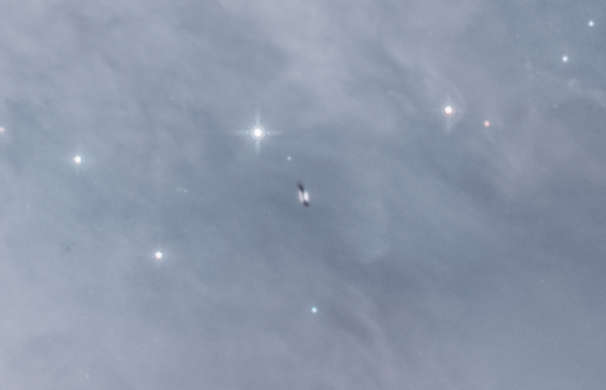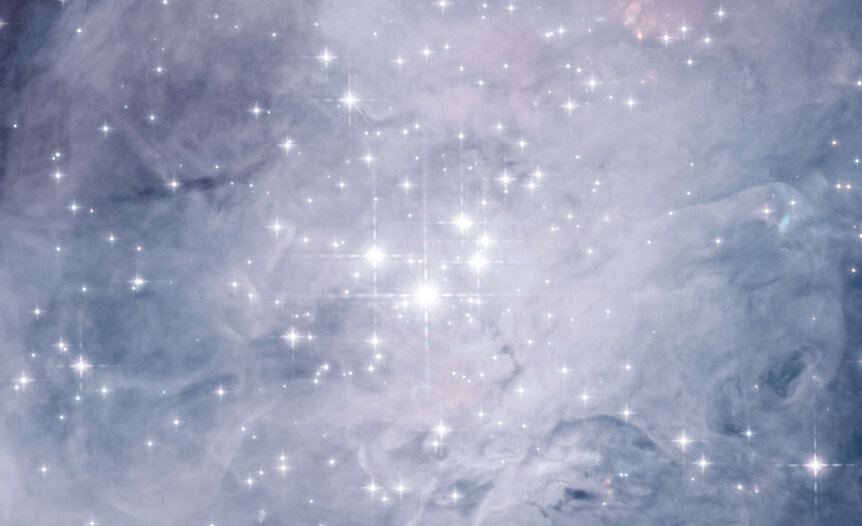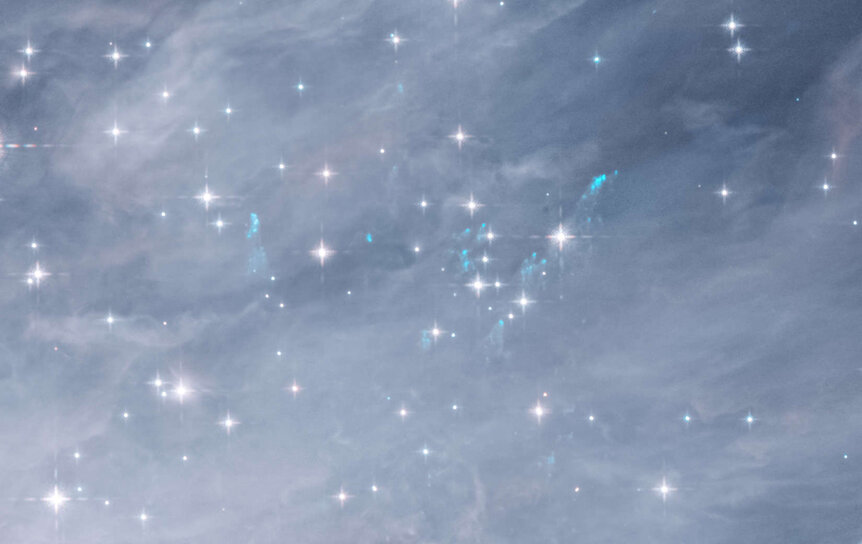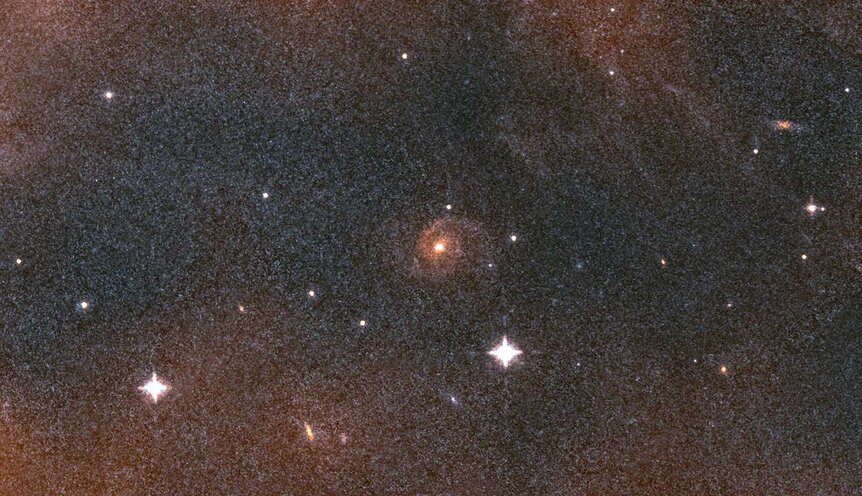Create a free profile to get unlimited access to exclusive videos, sweepstakes, and more!
The Orion Nebula like you've never seen it before
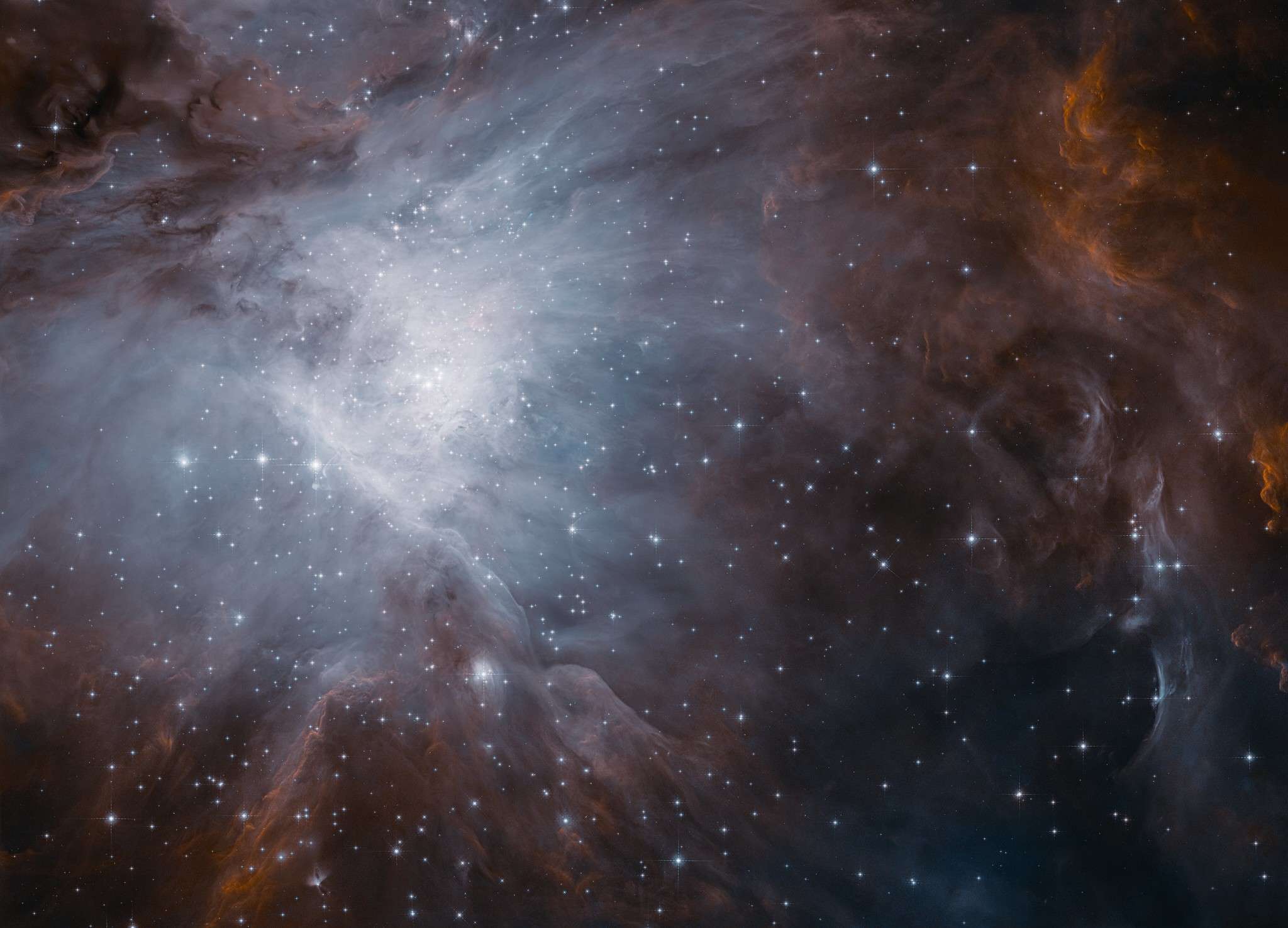
The Orion Nebula is one of the most photographed and intensely studied objects in the sky. The latter because it's the closest large star-forming gas cloud in the sky; hundreds of stars are being born there right now, and thousands of others have already gotten their start form the gas strewn all over this region.
But that explains the former, too. It's so big and close that it's visible to the naked eye as the "star" in Orion's dagger. Even with binoculars you can see it's not a star but a fuzzy patch, and through a small telescope it suddenly becomes a busy region full of gas, dust, and stars.
Of course, when you use Hubble to look at it the view becomes substantially better.
Most times you see the Hubble shot of Orion it's the famous one done in visible light, a ridiculously gorgeous shot showing the entire nebula in multiple hues.
But a recent study of the nebula drilled down into it using just two different colors, both in the infrared. The total observation time spent looking to the cloud was 39 hours, creating a mosaic made of 52 separate pointings of the space telescope.
Image processing wizard Judy Schmidt (aka @SpaceGeck) used those observations to make an astonishing image of the nebula, and while it's recognizable, it's not quite what you're used to. Behold!
WHOA.
[Note: This is the teeny version of the image; if you dare, grab the 13,990 by 10,075 pixel version. It's only 175 MB!]
This doesn't show the whole nebula, but instead the inner half or so, an area just smaller than the full Moon on the sky. If you're familiar with the nebula you can pick out some recognizable sights, but overall it looks different.
That's because these observations were made to look for substellar objects, things that are too low mass to become full stars. These include planets and brown dwarfs; they lack the mass needed to create conditions in their cores where they can fuse hydrogen into helium, the process that makes stars, well, stars. These objects are faint and hard to find, so we don't know a lot about how they form in nebulae. That's why these observations were made.
They did this by looking in the near infrared, just outside what our eyes can see. They found the objects in two ways. One is simply by brightness: The stars in the nebula are roughly a million years old, and substellar objects glow only by the heat of their formation, cooling over time. So any object below a certain brightness is likely substellar. Out of 4,504 objects detected in these observations, 3352 fit this criterion.
But it gets better. They used two filters that only allow very narrow slices of colors through. One is what we call continuum, just a range of colors all objects give off. The other is a narrow line. Some molecules and atoms emit and absorb light in very specific colors, and that's useful for identifying them. Water, for example, does so at a wavelength of 1.345 microns.
That's important! If a cloud of water vapor is in an object's upper atmosphere, it absorbs that color of light coming from below. The light we see from that object is therefore missing that color, dimmer. Stars don't have water vapor in their upper layers; they're too hot. Objects cooler than about 2600° C do, though, and this includes very low mass objects like free-floating planets and some brown dwarfs. Out of the 3352 substellar objects seen, 742 show water vapor absorption. The faintest ones seen are only a few times the mass of Jupiter! Incredible.
So the science is very cool. But in an image this big there's more to see…
On her Flickr page for the image, Schmidt points out that adorable little thing, called a proplyd, short for protoplanetary disk. That's a planetary system forming right before your eyes, the dusty disk of material seen nearly edge on. It may seem small here but distance will do that; it's probably many tens of billions of kilometers across. We see these in star-forming regions all over the place, but only the closest ones show detail.
To the left in the image is the iconic Trapezium, the collection of four massive stars so powerful their light is what's illuminating and exciting the gas in the entire nebula. These are the four stars you can see through a small telescope looking at the nebula. Each of these is so massive it will explode in a supernova. That won't happen for a million years or more, but what a sight that will be! All that gas around them will be lit up and slammed by the light and expanding debris. What a show… but not for us. Our descendants, maybe.
I would've totally missed this one, but of course Schmidt spent a lot of time fiddling with the images and would've spotted small details: "Bullets" of gas moving through the nebula. Discovered in 1983, deep ALMA observations shows that these are the ends of long filaments of gas being shot out of a small clot of dense gas called the Orion Molecular Cloud, located to the upper right of the Trapezium.
Deep in the middle of that cloud are massive stars interacting with each other, and it's thought that these stars still have disks of material around them. When the stars swung by each other closely, that material was ejected, hard, by the vast forces wielded. A hundred such streamers all point back to the site of the event, with material moving outward at speeds of 150 kilometers per second. At the ends the gas around them gets heated, and that's why they can be seen in this image.
Check that out! A galaxy! I would not have expected to see this in a shot of the nebula. The gas and dust are so thick there that I'd think any background objects would be totally blocked, but to the very upper right this spiral galaxy peeks through an area of thinner material. It's faint and small, but if the nebula weren't there I imagine this would be a well-known object to astronomers.
Obviously, there's a lot more to see in the image. Go take a look! What other cosmic treasures can you find?

